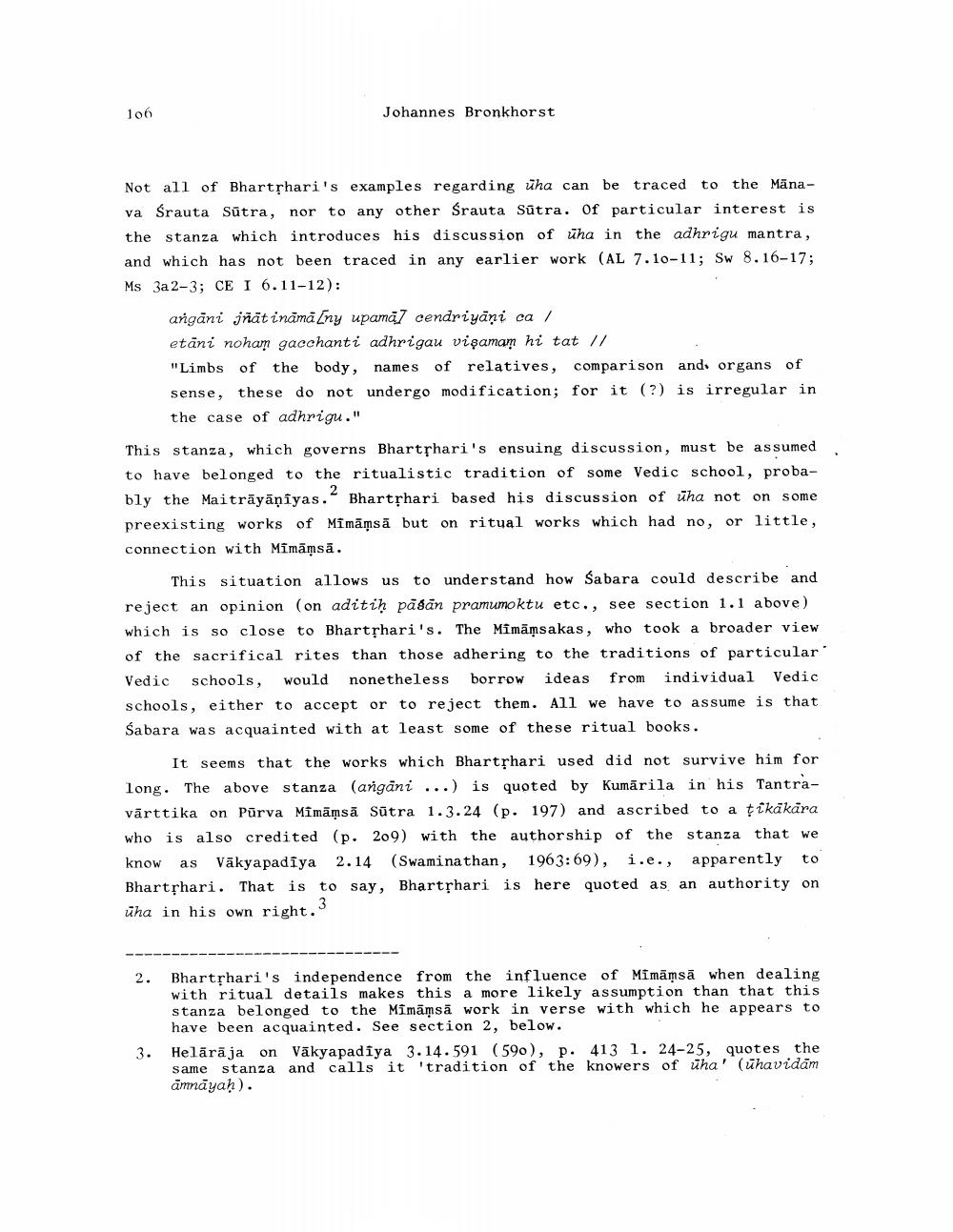Book Title: Studies On Bhartrhari Author(s): Johannes Bronkhorst Publisher: Johannes Bronkhorst View full book textPage 6
________________ 106 Johannes Bronkhorst Not all of Bhartshari's examples regarding üha can be traced to the Mānava Srauta Sūtra, nor to any other Srauta Sūtra. of particular interest is the stanza which introduces his discussion of üha in the adhrigu mantra, and which has not been traced in any earlier work (AL 7.10-11; Sw 8.16-17; Ms 3a 2-3; CEI 6.11-12): argani jñātināma Iny upamā/ cendriyāni ca/ etāni noham gacchanti adhrigau vişamam hi tat // "Limbs of the body, names of relatives, comparison and organs of sense, these do not undergo modification; for it (?) is irregular in the case of adhrigu." This stanza, which governs Bhartshari's ensuing discussion, must be assumed to have belonged to the ritualistic tradition of some Vedic school, probably the Maitrāyāṇiyas. Bhartshari based his discussion of üha not on some preexisting works of Mimāṁsā but on ritual works which had no, or little, connection with Mimāmsā. This situation allows us to understand how Sabara could describe and reject an opinion (on aditih păsăn pramumoktu etc., see section 1.1 above) which is so close to Bhartshari's. The Mimāmsakas, who took a broader view of the sacrifical rites than those adhering to the traditions of particular Vedic schools, would nonetheless borrow ideas from individual Vedic schools, either to accept or to reject them. All we have to assume is that Śabara was acquainted with at least some of these ritual books. It seems that the works which Bhartshari used did not survive him for long. The above stanza (angani ...) is quoted by Kumārila in his Tantravārttika on Pūrva Mimāņsā Sūtra 1.3.24 (p. 197) and ascribed to a ţikakara who is also credited (p. 209) with the authorship of the stanza that we know as Vākyapadiya 2.14 (Swaminathan, 1963:69), i.e., apparently to Bhartshari. That is to say, Bhartshari is here quoted as an authority on üha in his own right. Bhartshari's independence from the influence of Mimāmsā when dealing with ritual details makes this a more likely assumption than that this stanza belonged to the Mimāmsā work in verse with which he appears to have been acquainted. See section 2, below. Helārāja on Vākyapadiya 3.14.591 (590), p. 413 l. 24-25, quotes the same stanza and calls it 'tradition of the knowers of uha' (ühavidām āmāyaḥ).Page Navigation
1 ... 4 5 6 7 8 9 10 11 12 13 14 15 16 17
